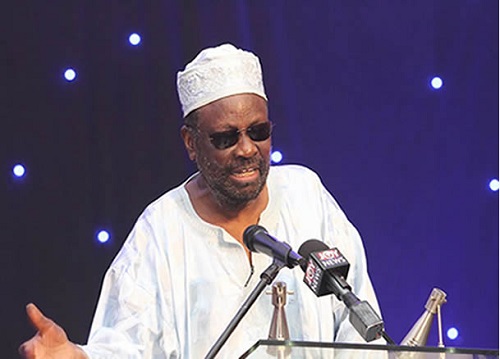Any exercise whose principal objective is conflated with a subsidiary or secondary objective, is doomed to failure. So say military experts.
The reason is that an objective, if it’s worth pursuing, must be single-minded and strictly focused. Any distractions can only puncture the punch needed to bring victory to the objective.
In its desire to end the galamsey problem, the Government has evidently been caught in the tentacles of what might be called “the second objective paradigm.”
The Government realises only too well that the destruction caused by galamsey to our water resources as well as our food and cocoa farms, must be stopped, or else, we shall soon see a Ghana that imports water for its citizens to drink.
We will also see our country’s inhabitants becoming severely afflicted with numerous cancerous diseases caused by the poisoning of our environment, generally, with mercury, cyanide and other dangerous chemicals, that are absorbed into our soil during galamsey operations.
But at the same time, the Government rightly recognises that there are hundreds of thousands of school leavers, who need to earn a living and who, unable to find jobs easily in both the public and private sectors, are amorphously drawn into the galamsey. Some have become like gangsters: they’ve lost all the constraints in behaviour created by the social norms that formerly governed their behaviour.
Now, the activities of gangsters are reprehensible and must be repressed by the forces of law and order. Yet an attempt must be made to redeem them back into society, if possible. Hence the dilemma that faces our Government.
Faced with a similar outcry against unemployment, the PNDC Government of Flight-Lieutenant Jerry Rawlings promulgated, in 1989, a law meant to enable rural communities to engage in “small-scale mining”. This, it was hoped, would reduce the resentment in the country felt against the fact that whilst many communities were languishing in abject poverty, large-scale mining by foreign-owned companies was lining the pockets of the owners overseas.
It was the same feeling that, years earlier, had led the National Redemption Council, led by Colonel I K Acheampong, to compulsorily acquire 55% of the shares of Ashanti Goldfields Corporation [in 1972].
But that’s where the similarity ended, for amazingly, majority ownership of Ashanti Goldfields was handed back to the private sector, by the PNDC in 1994!)
These equivocal, if not contradictory, considerations have always – willy-nilly – formed the background to any discussion of the mineral scene in Ghana. But things have now reached such a stage in the country that sentiment must be tossed out. We are now in a position of “either-or”: either we allow sentiment to lead us to wink at the destruction caused by the galamseyers, or we adopt and maintain stern measures against galamsey, to save our country’s water bodies for the future generations we are busy producing.
The way to save the country from the destruction by galamseyers is to isolate the problem of enabling unemployed young people to earn a decent living, from the problem of stopping galamsey.
We must accept that the pull of money, added to the corrupt and undisciplined nature of our social system, will never allow “small-scale mining” to be LAWFULLY carried out in this country in a disciplined manner. It has been tried many times before – under the aegis of the Ministry of Lands and Mineral Resources (through the Minerals Commission) and also under the supervision of the Ministry of Environment, Science, Technology and Innovation. Neither has worked. Instead, we are left with the polluted rivers and dying streams.
But it’s basically the same idea that has now been “rebranded” and launched at Tarkwa! Now, one need not be a pessimist to realise that the same forces that have consistently dogged every effort by the Government to ride the two horses of employment for the youth and saving our water resources by stopping galamsey, will again try and force the Government to go in opposite directions at once.
Therefore let us try something else. Who remembers that both the Government of President Kwame Nkrumah and that of Dr K A Busia, tried their hand at solving the problem of unemployment? Nkrumah created the Workers’ Brigade and the United Farmers’ Council, while the Busia Government launched a comprehensive “Rural Development” programme under which the Government assisted the rural communities to build health centres and schools.
The NPP’s “One District, One Factory” idea is not too far removed from these earlier endeavours. Resources (meant to constitute the welfare element of the new programme launched at Tarkwa) should be removed from anything connected with galamsey and used to boost the “One District, One Factory”- type of programme.
District labour committees should be formed and financed, to identify, at the local level, projects which can be easily and quickly carried out, to absorb young, unemployed people. Technical assistance system should be built up – to absorb unemployed graduates eager to learn new techniques.
But whilst those programmes are going on, the hand of the armed forces and the police should be strengthened to end galamsey. And completely independent units should be formed and trained to carry out the reclamation of rivers, river-banks, farms and other lands laid waste by the galamseyers.
Simultaneously, a ruthless effort should be made to actualise the stringent punishments against galamsey operators, envisaged in the Mines and Minerals Act (Act 995). Under the Act, judges and magistrates are obliged to impose “mandatory” sentences provided, without the discretion to reduce them. Let the police redouble their efforts to put people before the courts. The media should be encouraged to publicise the harsh sentences arrested galamseyers are obliged to face – so that other galamseyers might be deterred.
By Cameron Duodu


